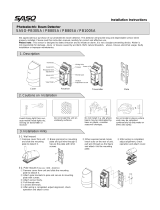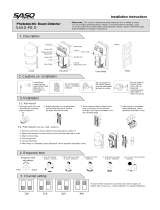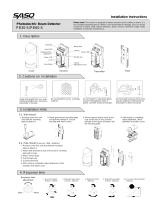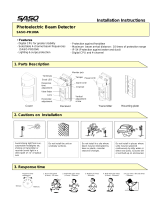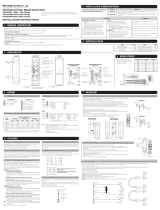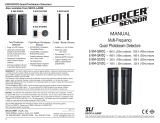
18. Troubleshooting
17. Anti-Insect / Rain Construction
Seal
Seal
(Wire Hole)
Seal
(Bracket
Bolt Hole)
Seal
(Wire Hole)
•Rubber sealing in base, wire holes, and
bracket bolt holes prevents any penetration of
dust, insects, and/or rain.
Trouble
Operation LED does not light
Alarm LED does not light
when the beam is broken.
Alarm LED continues to
light
Intermittent alarms.
Possible Cause
1. No power supply.
2. Bad wiring connection or broken wire,
short
1. No power supply.
2. Bad wiring connection or broken wire, short.
3. Beam is reflected on another object and sent
into the receiver.
4. Two beams aren’t broken simultaneously
1. Beam alignment is out.
2. Shading object between Tx. and Rx.
3. Optics of units are soiled.
4. Improper channel.
1. Bad wiring connection.
2. Change of supply voltage.
3. Shading object between Tr. and Re.
4. A large electric noise source, such as power
machine, is located nearby Tx. and Rx.
5. Unstable installation of Tx. and Rx.
6. Soiled optics of Tx. and Rx.
7. Improper alignment.
8. Small animals may pass through the 2 beams
1. Turn on the power.
2. Check wiring.
1. Turn on the power.
2. Check wiring.
3. Remove the reflecting object or change
beam direction.
4. Break 2 beams simultaneously.
1. Check and adjust again.
2. Remove the shading object.
3. Clean the optics with a soft cloth.
4. Check channel.
1. Check again.
2. Stabilize supply voltage.
3. Remove the shading object.
4. Change the place for installation.
5. Stabilize.
6. Clean the optics with a soft cloth
7. Check and adjust again.
8.Set the response time longer.
Possible Solution
11












